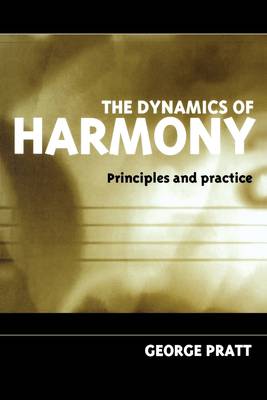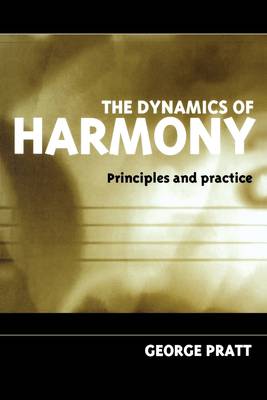
Door een staking bij bpost kan je online bestelling op dit moment iets langer onderweg zijn dan voorzien. Dringend iets nodig? Onze winkels ontvangen jou met open armen!
- Afhalen na 1 uur in een winkel met voorraad
- Gratis thuislevering in België vanaf € 30
- Ruim aanbod met 7 miljoen producten
Door een staking bij bpost kan je online bestelling op dit moment iets langer onderweg zijn dan voorzien. Dringend iets nodig? Onze winkels ontvangen jou met open armen!
- Afhalen na 1 uur in een winkel met voorraad
- Gratis thuislevering in België vanaf € 30
- Ruim aanbod met 7 miljoen producten
Zoeken
€ 72,95
+ 145 punten
Omschrijving
This is a readable and imaginative book presenting, with infectious enthusiasm, a sensible simplification of the main processes of classical harmony in the Bach-Schubert period. Pratt's explanations of concepts such as real and substitute chords, of false distinctions between major and minor and of the simple basis of seemingly complex chromatic harmony enables readers to grasp the principles of harmonic progression, and to see most progressions as a form of dominant-powered movement. He focuses his study on Bach chorales, Mozart piano sonatas, and a Schubert song cycle, thereby providing depth, variety, and a realistic sense of a context of real music to his explanations and to the exercises. But he also offers the reader an immediate invitation to apply the same principles to an immense range of musical literature from Monteverdi to Scott Joplin.
Specificaties
Betrokkenen
- Auteur(s):
- Uitgeverij:
Inhoud
- Aantal bladzijden:
- 160
- Taal:
- Engels
Eigenschappen
- Productcode (EAN):
- 9780198790204
- Verschijningsdatum:
- 20/02/1997
- Uitvoering:
- Paperback
- Formaat:
- Trade paperback (VS)
- Afmetingen:
- 156 mm x 233 mm
- Gewicht:
- 249 g

Alleen bij Standaard Boekhandel
+ 145 punten op je klantenkaart van Standaard Boekhandel
Beoordelingen
We publiceren alleen reviews die voldoen aan de voorwaarden voor reviews. Bekijk onze voorwaarden voor reviews.











